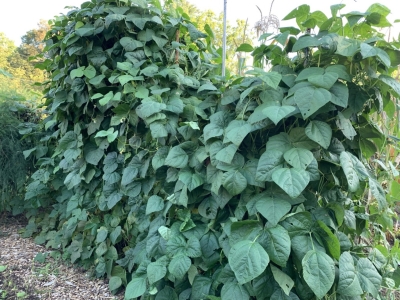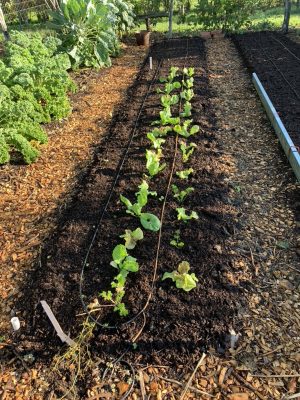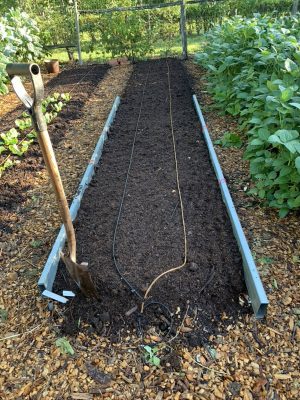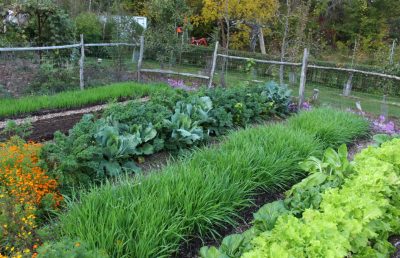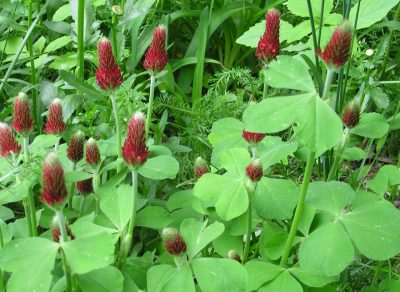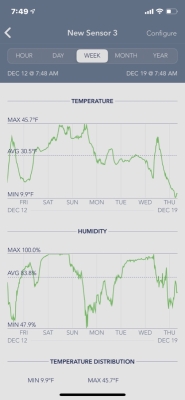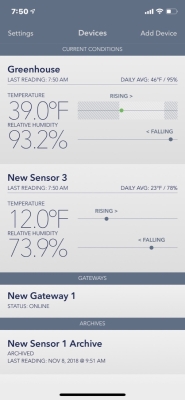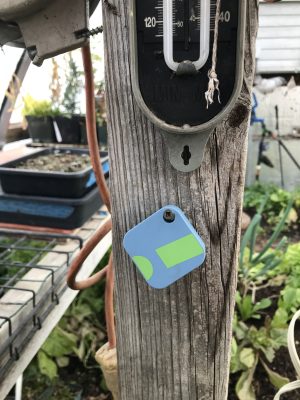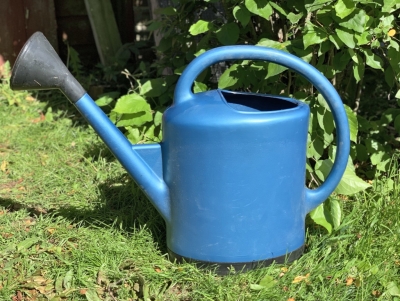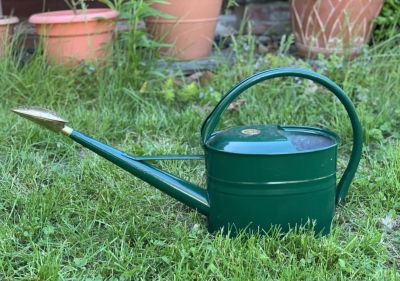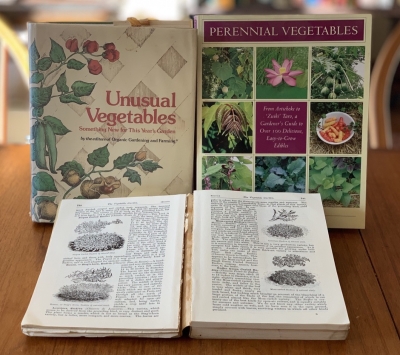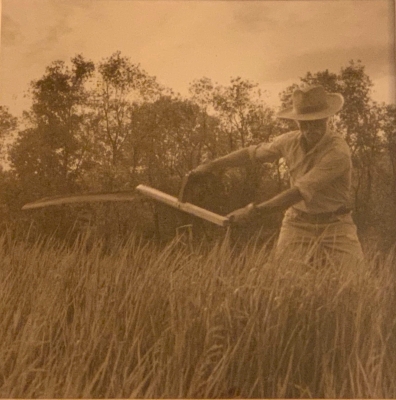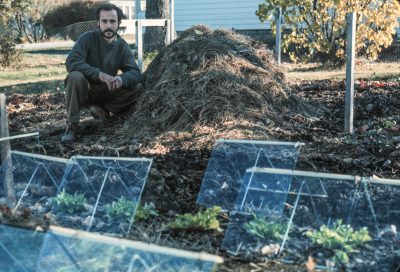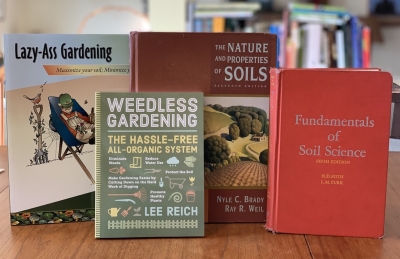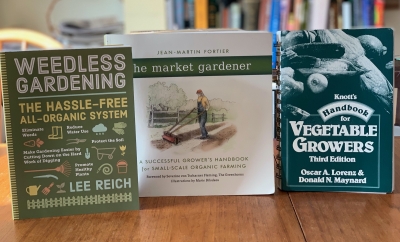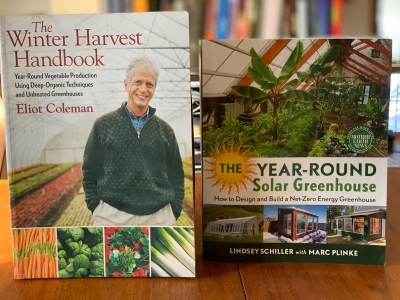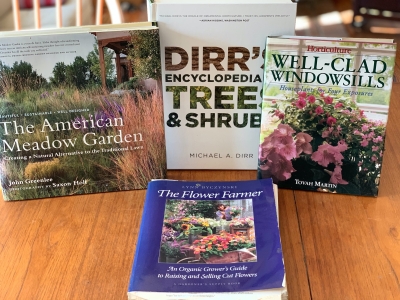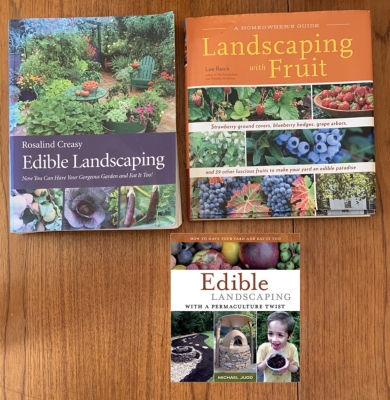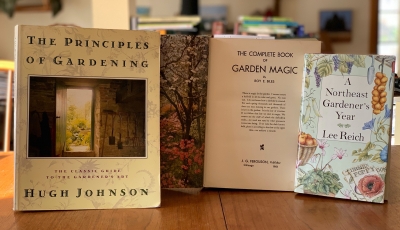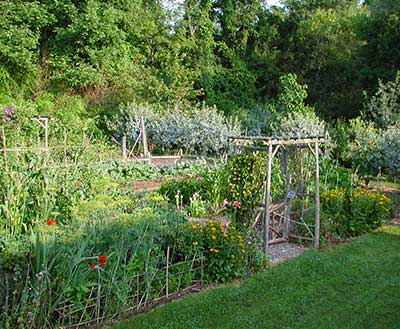Compost, of Course, and More
Very soon I plan to drive a truckload of compost to my sister Peggy’s house. Like many people, she’s caught the gardening bug, and this compost, along with a wheelbarrow I fished out of my town’s metal recycling, is a gift. It includes my help spreading it.
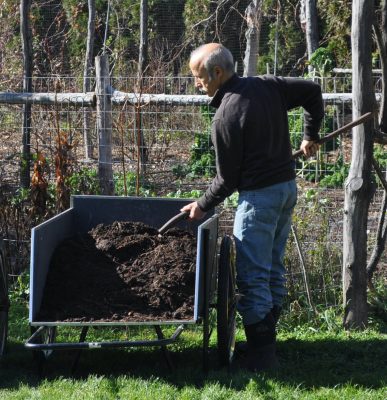
What else would be a good gift for any beginning gardener? (Okay, Peggy has been dipping her toes in the gardening waters for years, but only recently got more serious about growing vegetables.)
For starters, indispensable, would be a trowel or a hori-hori knife, the latter being something of a hybrid of a garden knife and a trowel, not as good as either parent but great for all-around use. No need to labor over the worth of a high-end, stainless steel, oak-handled trowel; either will work well and last long if stored out of the elements.
A pair of hand shears would come in handy for clipping tomato suckers or cutting down pepper or eggplant plants at season’s end. They’e admittedly not indispensable for vegetable gardening but very useful if any shrubs or trees are also in the picture. 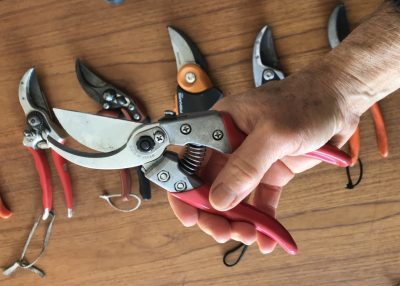 For a hand shears, quality counts. Blades of the best hand shears, as in their name, shear past each other like those of scissors. They’re called “bypass pruners.” My favorite is the ARS hand shears. Shears with anvil blades — “anvil pruners” — sport a sharp blade that comes down on a narrow, flat surface; the flat surface limits how close you can make a cut and the shear works poorly if any nick or waviness develops on the sharp blade.
For a hand shears, quality counts. Blades of the best hand shears, as in their name, shear past each other like those of scissors. They’re called “bypass pruners.” My favorite is the ARS hand shears. Shears with anvil blades — “anvil pruners” — sport a sharp blade that comes down on a narrow, flat surface; the flat surface limits how close you can make a cut and the shear works poorly if any nick or waviness develops on the sharp blade.
For anyone venturing into growing their own seedlings, which greatly widens the choices of varieties to grow, I recommend one of the many “self watering seed starters.” Cells housing plants sit on a capillary mat that dips into a water reservoir just below. 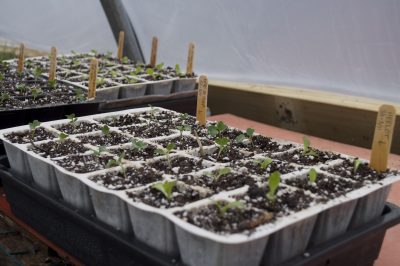 Soil in the cells sucks up moisture from below through capillary action to remain consistently moist, and the reservoir requires replenishment infrequently.
Soil in the cells sucks up moisture from below through capillary action to remain consistently moist, and the reservoir requires replenishment infrequently.
And finally, gloves, although these are very personal and it’s hard to pick out a pair suited to anyone else besides yourself. How about money for gloves? And some people like to get their hands in the dirt. As a professional pianist and piano teacher, probably not Peggy (check her out at www.peggyreich.com).
Reading Can Substitute for Years of Gardening
Okay, moving on to a most important “tool” for beginning, even intermediate and advanced, gardeners alike: books and the web. That is, if the information offered is sound — not always the case. One way to get solid information off the web is to follow any search term(s) with “site:edu” or “site:gov”, which brings you to university or government sites, respectively.
Not that those are the only reputable sites, but then judge whether other sites are reputable based on the author(s), possible agendas for financial gain, and comparing other information on the site with that you know for sure is either correct or false.
As an example, someone recently told me that black walnut plants are high in iodine, as evidenced by the brown stain from the hulls and the first of many hits if you enter “iodine” and “black walnut” into a search engine. This didn’t ring true to me so I looked up analyses of iodine concentrations in black walnut on a number of reputable sites. No, black walnut plants do not contain iodine, despite all the sites touting the myth that they do.
(Everything you read on my site is, of course, reputable. Ha, ha.)
On to books . . . if I may be so bold as to begin by recommending my own. Weedless Gardening 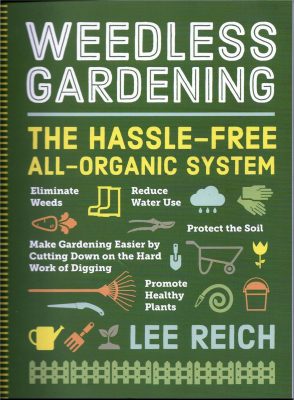 tells how to prepare and manage the soil, when to sow and transplant vegetables, what to use for mulch, how to make compost, the ins and outs of drip irrigation, and more. A Northeast Gardener’s Year
tells how to prepare and manage the soil, when to sow and transplant vegetables, what to use for mulch, how to make compost, the ins and outs of drip irrigation, and more. A Northeast Gardener’s Year  takes you on a timely jog through the year with all things gardening: soil, flowers, houseplants, naming plants, etc., depending on what needs doing gardenwise indoors and out. I’ve written more books (all are listed on this site), but these two are more essential.
takes you on a timely jog through the year with all things gardening: soil, flowers, houseplants, naming plants, etc., depending on what needs doing gardenwise indoors and out. I’ve written more books (all are listed on this site), but these two are more essential.
Plenty of other reputable gardening books are around if you seek them out. For an all around gardening book, check out Barbara Damrosch’s The Garden Primer. Specifically, for vegetables, there’s E. C. Smith’s The Vegetable Gardener’s Bible or some oldies, or, if you can get them, A. C. Burrage’s Burrage on Vegetables or Gardening: The Complete Guide to Growing America’s Favorite Fruits & Vegetables from the National Gardening Association.
Quality Compost?
Back to that truckload of compost for Peggy. A truckload of compost is more than I can spare of my own black gold, so I’m purchasing it in bulk.
I picked up the phone, dialed some numbers, and asked some prospective compost merchants about their products to make sure the compost would be of good quality. What went into the compost, for instance? A greater the variety of raw materials results in a better variety of nutrients in the end product as long as those raw materials don’t include industrial wastes that might contain heavy metals, or, in dry regions, feedlot manures, because of excess salts.
What about the acidity or pH? Ideally the pH lies between 6 and 7.
How rocky or stony is the compost? No need to pay for rocks rather than compost. Similarly, is the material pure compost (desired), or compost diluted with a large portion of soil?
How about weeds or weed seeds? Time, temperature, and pile turning all have bearing on the number of viable weed seeds in a finished compost. A carefully built compost pile easily reaches a high enough temperatures to kill most weed seeds. But even when weed-free initially, composts that sit around too long (especially if uncovered) will pick up weed seeds carried in by wind and animals.
Good gardening, and especially organic gardening, involves moving bulky organic materials such as hay, straw, wood chips, wood shavings, leaf mold, and compost. These organic materials are what feed the friendly soil microbes which, in turn, feed the plants, as well as beef up the soil ecosystem in many biological and physical ways.
So two other items that come to mind, after the trowel, pruning shears, seed starting flats, and books, are a wheelbarrow or garden cart, and pitchfork or shovel. As I wrote, I’ll leave the wheelbarrow with her and can also leave of the many pitchforks I’ve accumulated over the years. Have I forgotten to mention any other gardening essentials?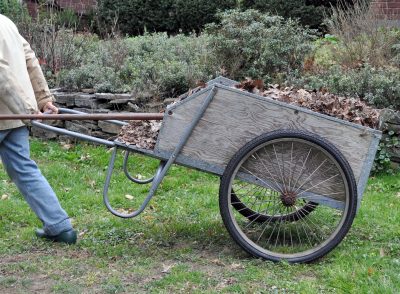
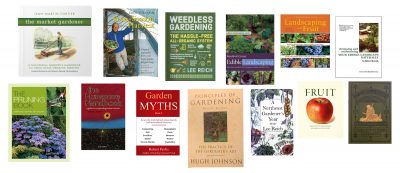

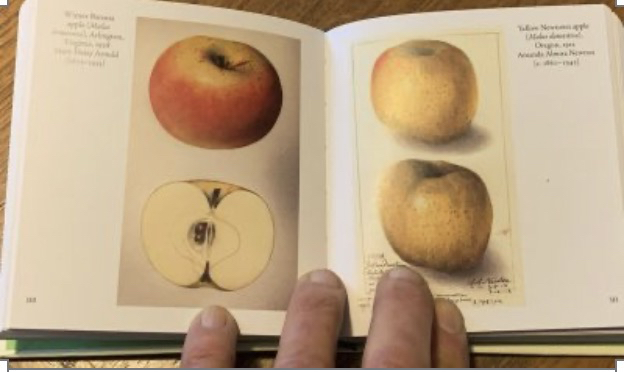
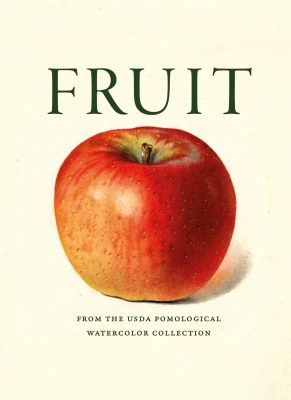
 I’ve used this weed-less system for over 25 years! $10.95
I’ve used this weed-less system for over 25 years! $10.95 ways to hasten ripening. $24.99
ways to hasten ripening. $24.99 from ornamental trees and bushes, to fruit and nut trees, to houseplants and perennials. A final section delves into specialized techniques such as topiary, bonsai, and espalier. $29.95
from ornamental trees and bushes, to fruit and nut trees, to houseplants and perennials. A final section delves into specialized techniques such as topiary, bonsai, and espalier. $29.95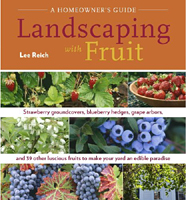 (the ornamental value, how easy they are to grow, what they taste like, varieties). Also a chapter on landscape design basics. $19.95
(the ornamental value, how easy they are to grow, what they taste like, varieties). Also a chapter on landscape design basics. $19.95 short description of what is going on plantwise. From there we are left to the whims and vagaries of the weather and the weeds, the unfolding of blossoms and ripening of fruits, perhaps the cry of a plant begging to be repotted — any and all topics gardenwise. $17.00
short description of what is going on plantwise. From there we are left to the whims and vagaries of the weather and the weeds, the unfolding of blossoms and ripening of fruits, perhaps the cry of a plant begging to be repotted — any and all topics gardenwise. $17.00 everyone from newbies to experienced gardeners whose curiosity at the wonders of cultivation grows deeper and stronger with each season. How to maximize flavor and nutrition; how to help plants outwit drought; making the best sse of compost; etc, etc. $18.99
everyone from newbies to experienced gardeners whose curiosity at the wonders of cultivation grows deeper and stronger with each season. How to maximize flavor and nutrition; how to help plants outwit drought; making the best sse of compost; etc, etc. $18.99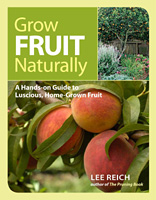 pest control, storing your bounty, and growing fruit plants in containers. Details on over 30 fruits and how to reap their bounty. $24.95
pest control, storing your bounty, and growing fruit plants in containers. Details on over 30 fruits and how to reap their bounty. $24.95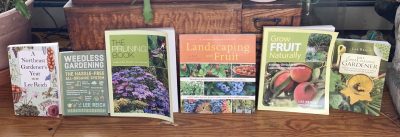
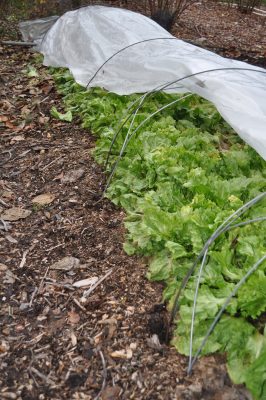
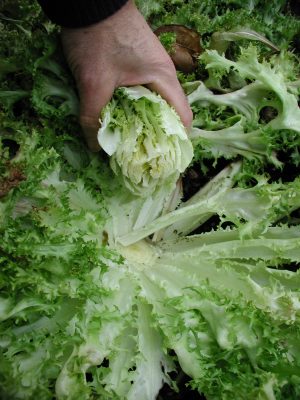 Only the slightest hint of bitterness remains, enough to make the taste more lively — delicious in salads, soups, and sandwiches.
Only the slightest hint of bitterness remains, enough to make the taste more lively — delicious in salads, soups, and sandwiches.
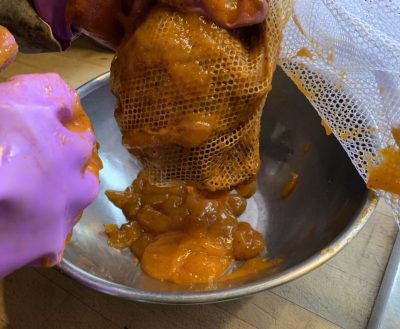 the pulp without seeds. No sweetener needed. Just jar it up and refrigerate (keeps about 2 weeks) or freeze. Delicious.
the pulp without seeds. No sweetener needed. Just jar it up and refrigerate (keeps about 2 weeks) or freeze. Delicious.
 For a hand shears, quality counts. Blades of the best hand shears, as in their name, shear past each other like those of scissors. They’re called “bypass pruners.” My favorite is the ARS hand shears. Shears with anvil blades — “anvil pruners” — sport a sharp blade that comes down on a narrow, flat surface; the flat surface limits how close you can make a cut and the shear works poorly if any nick or waviness develops on the sharp blade.
For a hand shears, quality counts. Blades of the best hand shears, as in their name, shear past each other like those of scissors. They’re called “bypass pruners.” My favorite is the ARS hand shears. Shears with anvil blades — “anvil pruners” — sport a sharp blade that comes down on a narrow, flat surface; the flat surface limits how close you can make a cut and the shear works poorly if any nick or waviness develops on the sharp blade. Soil in the cells sucks up moisture from below through capillary action to remain consistently moist, and the reservoir requires replenishment infrequently.
Soil in the cells sucks up moisture from below through capillary action to remain consistently moist, and the reservoir requires replenishment infrequently.
